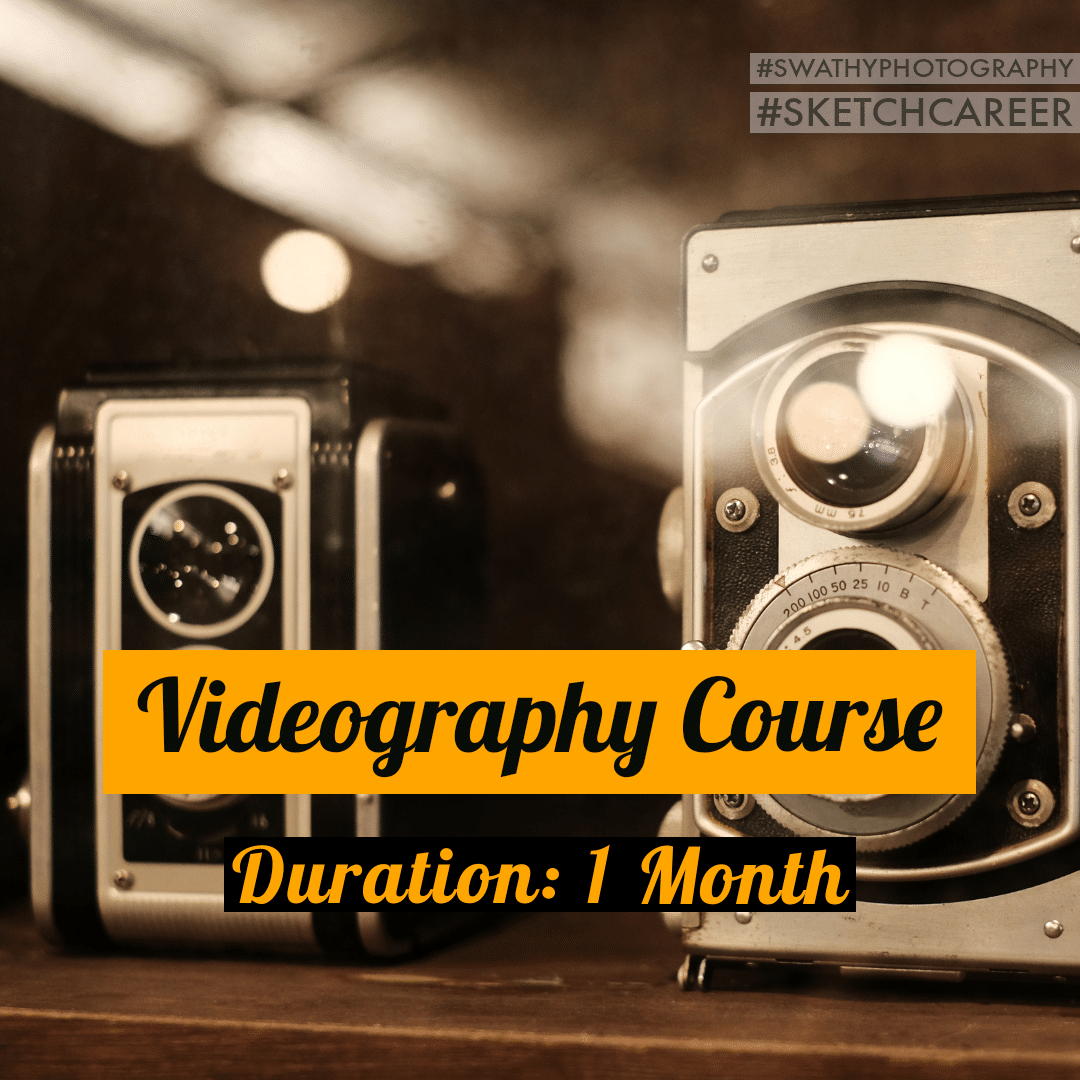Course Description: This comprehensive videography course is designed to teach you the skills needed to create professional-quality videos in a variety of settings. Whether you’re a beginner or have some experience in videography, this course will provide you with the knowledge and practical training you need to take your skills to the next level. From camera settings and composition to lighting and sound design, you’ll learn the key elements of videography and how to apply them in real-world situations.
Course Duration: 1 Month
Course Fee: 20,000
Course Content:
What is Videography: Videography is the art and science of capturing moving images using a video camera. It involves storytelling, composition, and technical skills to create visually engaging and compelling videos. Videographers use their knowledge of camera operation, lighting, sound, and editing to convey a message or tell a story effectively.
Shooting Process (Production Pipeline): The shooting process, also known as the production pipeline, encompasses all the steps involved in creating a video, from pre-production planning to shooting and post-production. This process includes scriptwriting, storyboarding, location scouting, equipment setup, actual shooting, and capturing footage as part of a well-structured workflow.
What is Frame Rate (For Traditional Video/ Candid Video): Frame rate is the number of individual frames or images captured per second in a video. For traditional video, 24 to 30 frames per second (fps) are standard, giving a cinematic or television look. Candid videos, like vlogs or documentaries, might use various frame rates to create a specific mood or style.
What is Sequence, Scene & Shot (For Short Films): In short films and narrative videography, a sequence is a collection of scenes, and scenes are composed of individual shots. A shot is a continuous recording, and each scene consists of various shots that contribute to the storytelling. Sequences tie together multiple scenes to create a coherent narrative.
Types of Shots, Types of Lenses: Videographers use different types of shots, such as wide shots, close-ups, and tracking shots, to convey specific emotions and perspectives. The choice of lens plays a crucial role in achieving these shots, ranging from wide-angle lenses for expansive scenes to telephoto lenses for close-ups and compressed perspectives.
Types of Camera Angles & Movements: Camera angles and movements are essential for conveying mood and meaning in videos. Low angles, high angles, and Dutch angles can alter the perception of characters or objects, while camera movements like pans, tilts, and dollies create dynamic shots and storytelling techniques.
Types of Lighting in Movies: Lighting is an art in itself, and in movies, different lighting techniques, such as three-point lighting and natural lighting, are employed to set the mood, create ambiance, and draw attention to specific subjects. Understanding how to manipulate light is crucial for videographers.
Framing & Composition Rules: Framing and composition rules dictate how elements are arranged within the frame. The rule of thirds, leading lines, and balance are some composition principles that help videographers create visually appealing and effective shots.
Camera Transitions: Transitions are used to change from one shot to another seamlessly. These can include cuts, dissolves, wipes, and many other creative techniques. Properly executed transitions enhance the flow and impact of the video.
Color Theory & Color Psychology: Color theory teaches videographers how to use color effectively in storytelling. Different colors evoke emotions and moods, and understanding color psychology helps convey the intended message in a video.
How to Shoot with Green Screen: Green screen, or chroma key, allows videographers to replace the green background with another image or video. This technique is widely used for creating various backgrounds or visual effects and requires precise setup and post-processing knowledge.
How to Shoot Double Action Scene: Shooting a double action scene involves choreographing and capturing two or more versions of the same character or subject in a single frame. This can be done through careful planning, camera angles, and editing techniques.
How to Shoot for YouTube: Shooting for YouTube involves understanding the platform’s requirements and audience expectations. You’ll learn about optimal video formats, aspect ratios, and strategies for creating engaging content that resonates with YouTube viewers.
Creating Stop Motion & Time-Lapse Videos: Stop motion involves capturing individual frames to create animation, while time-lapse involves capturing images at specific intervals to condense time. These techniques require patience and precision, as well as understanding how to assemble and edit the resulting sequences.
Motion Graphics: Motion graphics are animated elements or text added to videos to convey information or enhance storytelling. You’ll explore techniques for creating and incorporating motion graphics into your videos.
Motion Tracking: Motion tracking involves following the movement of objects or subjects within a video. This can be used for various purposes, such as adding visual effects, text, or virtual objects that stay in sync with the movement in the video.
Exporting Options: After editing, videographers need to export their videos in the appropriate format and settings for various platforms and purposes. You’ll learn about the different export options and settings to ensure the best video quality for your intended audience.
Course Objectives:
- Understand the basics of videography and the equipment used in it
- Learn the techniques of camera settings and composition to create visually appealing videos
- Understand the importance of lighting and sound design in videography
- Learn pre-production, production, and post-production processes involved in videography
- Develop the skills to create a professional-quality video by the end of the course

